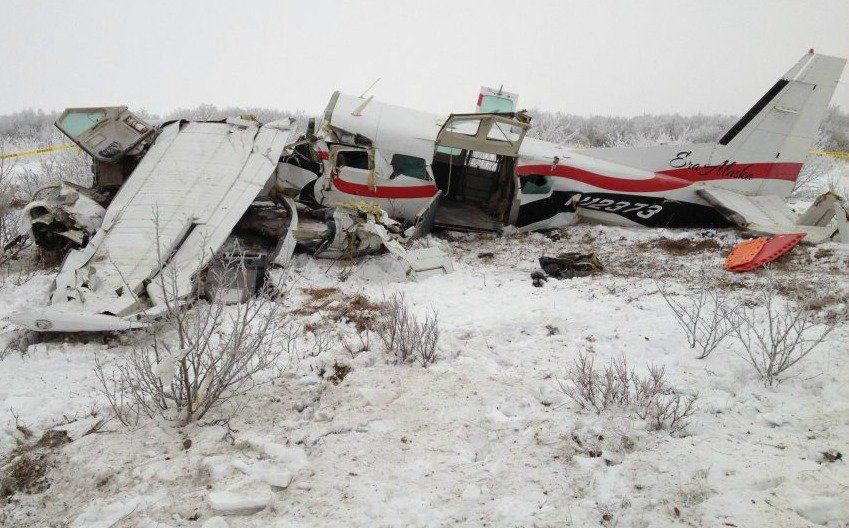
A fatal crash in Alaska in November 2013 was initiated by one small mistake by the pilot — a missed frequency change, which meant the lights failed to come on as expected at the destination airport — but in the NTSB’s final report, issued on Friday, the safety board said a chain of events and decisions by the pilot, the company he worked for and other company employees all contributed to the accident. “The pilot’s decision to initiate a visual flight rules approach into an area of instrument meteorological conditions at night and the flight coordinators’ release of the flight without discussing the risks with the pilot … resulted in the pilot experiencing a loss of situational awareness and subsequent controlled flight into terrain,” the NTSB said. Witnesses found the airplane an hour after the crash, but the pilot and three passengers died, including an infant being carried by his mother.
The pilot was flying a Cessna 208B Grand Caravan with nine passengers on board as a VFR scheduled commuter flight. The flight coordinator noted several risks — instrument meteorological conditions, night conditions and contaminated runways at both destination airports — but these were never discussed with the pilot, as company policy required, the NTSB said. About 18 miles from the first destination, the airplane encountered thick fog, and the pilot diverted toward an alternate airport. Post-accident examination of the pilot’s radio showed that the Caravan’s audio panel was still selected to the ARTCC frequency rather than the destination airport frequency, so the pilot-controlled lighting would not have activated. Witnesses on the ground saw the airplane fly over the airport at a relatively low altitude, about 300 to 400 feet. The airplane impacted the top of a ridge about 1 mile southeast of the airport at an elevation of about 425 feet MSL in a nose-high, upright attitude.


































